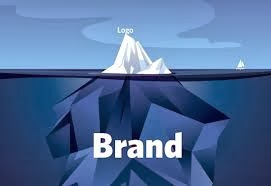Further focusing on corporate identity, as
mentioned in one of my previous post corporate identity developed in the 1950s,
an increasing number of organisations started branding, big organisations
benefited from the use of corporate identity, knowingly an individual would
distinguish a popular brand, because of its logo, for instance computer brands
one would tell if it is an “Apple” product by the logo that is found on all of
apple’s devices.
Corporate identity started to be used universally
in the 1960’s and 1970’s as it was recommended for all companies for them to
have their identity. Popular brands keep on reinventing their visual image to
make it fit into society. Rebranding for
instance is the process where the corporation is trying to present a new
different image to the same target audience and hoping to attract other
individuals to their market, it could involve minor or radical changes to the
brands logo, brand name, and image, advertising and marketing strategies. This is
normally done to reposition the brand to a better level of marketing or to just
keep in times with society. A brand identity normally changes with the content
it presents to increase its reputation.
Individuals might have mixed feelings about
brands, popular brands for example are more trusted than a brand that might
have just started out, people fall in love with brands, and develop strong
loyalties to the company. There are plenty of individuals that buy most of the
products of the brand they respect, for example: plenty of apple fans always
want to upgrade their phones to the next generation because it’s a new apple
product.
Anon 2011, Corporate ID [Online] , available at: http://www.designishistory.com/1960/corporate-id/, [accessed 28th of December 2013]
Anon 2011, Corporate identity + Branding, availble at: http://www.designhistory.org/Symbols_pages/Branding.html [accessed 28th of December 2013]



No comments:
Post a Comment